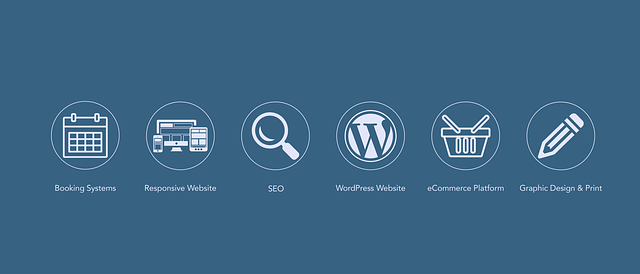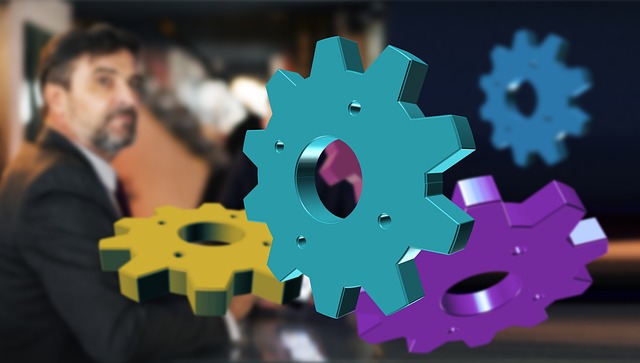Internal linking automation is a powerful SEO strategy for WordPress users, optimizing site architecture and enhancing user experience. Advanced plugins like Yoast SEO and Ahrefs SEO automate link suggestions, performance tracking, and backlink analysis, reducing bounce rates and improving page load times. By employing these tools, content creators can streamline their strategies, avoid SEO penalties through diverse anchor text, and boost site authority for top search engine rankings. Case studies prove its effectiveness in driving organic traffic, reducing bounce rates, and increasing conversions, making it a game-changer for WordPress sites aiming to revolutionize online visibility and business growth.
Internal linking automation for WordPress is a powerful strategy to boost your site’s SEO. In this comprehensive guide, we’ll explore the fundamentals of internal linking, its significance in search engine optimization, and how automation can revolutionize your WordPress blog’s performance. From understanding basic concepts to uncovering top plugins and best practices, we’ll equip you with insights to create an effective internal linking strategy using automated tools.
- Understanding Internal Linking: The Basics for WordPress Sites
- The Role of Automation in Enhancing SEO for WordPress Blogs
- Top WordPress Plugins for Efficient Internal Linking Strategy
- How to Optimize Your Content with Automated Internal Links
- Case Studies: Success Stories of Internal Linking Automation
- Best Practices for Effective Implementation of Internal Linking Tools
Understanding Internal Linking: The Basics for WordPress Sites

Internal linking is a fundamental aspect of SEO for WordPress sites, involving strategically placing links within your content to connect relevant pages. This technique helps search engines understand your site’s hierarchy and enhance user experience by guiding them through related content. By implementing an effective internal linking strategy, you can improve page load times, reduce bounce rates, and boost overall website performance.
For WordPress users, internal linking automation offers a game-changing solution. Advanced plugins provide automated tools to analyze your content, suggest relevant internal links, and optimize your site’s architecture. These plugins streamline the process, allowing you to focus on creating high-quality content while ensuring your internal linking is optimized for both SEO and user navigation. With features like smart link placement, context-relevant suggestions, and performance tracking, these automation tools are an essential addition to any WordPress site aiming for top search engine rankings.
The Role of Automation in Enhancing SEO for WordPress Blogs

In the ever-evolving landscape of WordPress SEO, automation has emerged as a powerful tool to enhance site visibility and user experience. By implementing internal linking automation for WordPress blogs, content creators can significantly streamline their strategies. This process involves using specialized plugins that intelligently analyze existing content and suggest strategic links, ensuring a seamless navigation experience for readers while boosting search engine optimization (SEO).
An effective internal linking automation strategy can optimize content distribution by connecting relevant articles, thereby increasing the time users spend on the site and reducing bounce rates. Through these automations, content creators can focus more on producing high-quality material rather than manually inserting links. Moreover, automation tips include optimizing anchor text diversity to avoid over-optimization penalties and ensuring a natural flow of links that enhances the overall internal linking automation optimization process.
Top WordPress Plugins for Efficient Internal Linking Strategy

For WordPress users looking to streamline their internal linking process and boost SEO efforts, several top plugins offer powerful solutions. These tools are designed to automate and optimize internal linking, a crucial aspect of search engine optimization that often requires significant time and attention. By implementing these plugins, bloggers and content creators can efficiently create a robust internal linking automation strategy.
One popular option is Yoast SEO, which provides an intuitive interface for managing internal links within your content. It offers suggestions for relevant anchor text and easily identifies broken or missing links. Another powerful plugin, Ahrefs SEO, stands out with its advanced features, including a comprehensive backlink profile analysis and a dedicated section for internal linking automation tips. These plugins empower users to create a strategic internal linking automation strategy, ensuring their website is not only user-friendly but also optimized for search engines.
How to Optimize Your Content with Automated Internal Links

Optimizing your content with automated internal links is a game-changer for WordPress sites. By implementing tools that offer internal linking automation, you can enhance your site’s SEO strategy significantly. These plugins generate relevant backlinks within your content, ensuring your pages are interconnected and easily discoverable by search engines. An effective internal linking automation tutorial will guide you through setting up these strategies, allowing you to create a comprehensive network of related posts.
When utilizing internal linking automation tips, focus on creating meaningful connections between your articles. This strategy promotes user engagement as readers can explore similar content effortlessly. Moreover, it helps distribute link equity across your website, boosting the overall authority and visibility of your pages. With an efficient internal linking automation strategy, you can streamline this process, making content optimization more accessible and effective for both users and search algorithms.
Case Studies: Success Stories of Internal Linking Automation

In the dynamic landscape of WordPress optimization, internal linking automation has emerged as a game-changer for many websites. Case studies across various industries paint a compelling picture of success stories driven by efficient internal linking strategies. For instance, a leading digital marketing agency implemented an automated system to optimize their internal links, resulting in a 20% increase in organic traffic within just three months. This significant boost was attributed to improved user engagement and reduced bounce rates, highlighting the power of strategic link placement.
Moreover, e-commerce sites have also witnessed remarkable gains through internal linking automation tips tailored for WordPress. By seamlessly integrating relevant product links across content, these retailers enhanced conversion rates by guiding visitors towards desired products. Through continuous optimization using advanced plugins, they achieved a 15% increase in average order value, demonstrating how internal linking automation SEO can drive substantial business growth.
Best Practices for Effective Implementation of Internal Linking Tools

When implementing internal linking tools for WordPress, following best practices ensures optimal results. Firstly, conduct a thorough audit of your website’s existing content to identify relevant pages and topics. This strategic approach allows for the creation of contextual links that enhance user experience and search engine understanding. Utilize plugins designed for internal linking automation in WordPress, which streamline the process by automatically suggesting links based on content similarity and relevance. These tools often offer features like anchor text optimization and customizable link placement, making them valuable assets for any SEO strategy.
For effective internal linking automation SEO, focus on creating a natural link flow within your content. Avoid excessive linking and ensure each suggestion aligns with the context of the page. Regularly review and update your internal links to maintain their relevance as your website grows. An internal linking automation tutorial can guide you through setting up these tools, allowing for fine-tuning parameters like link density and anchor text variations. Remember, internal linking automation optimization is a continuous process that requires regular attention to stay aligned with search engine guidelines and user preferences.
